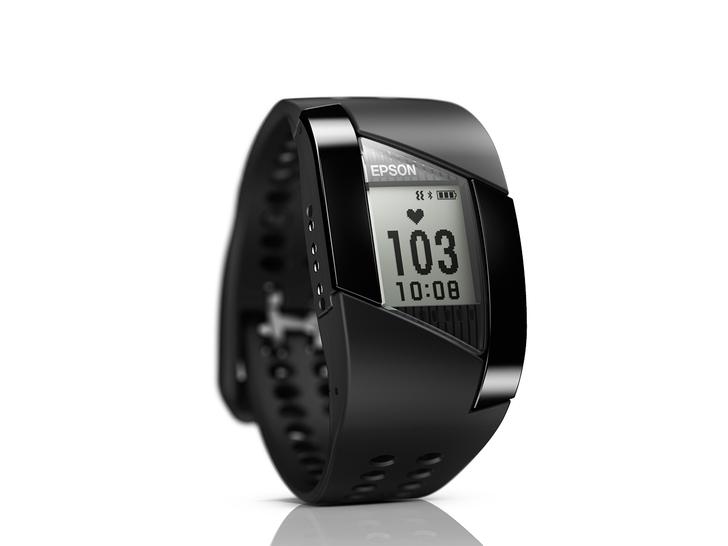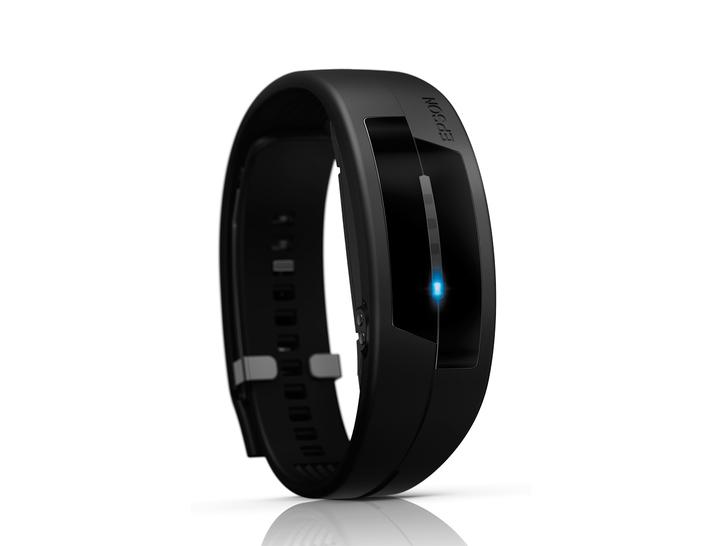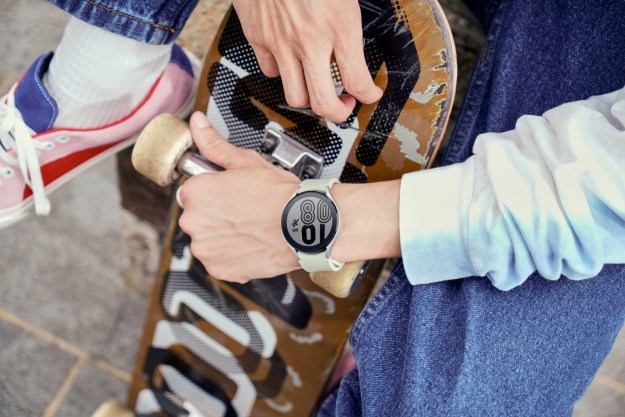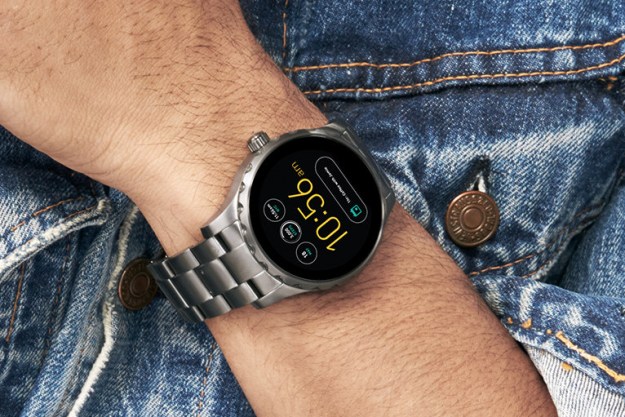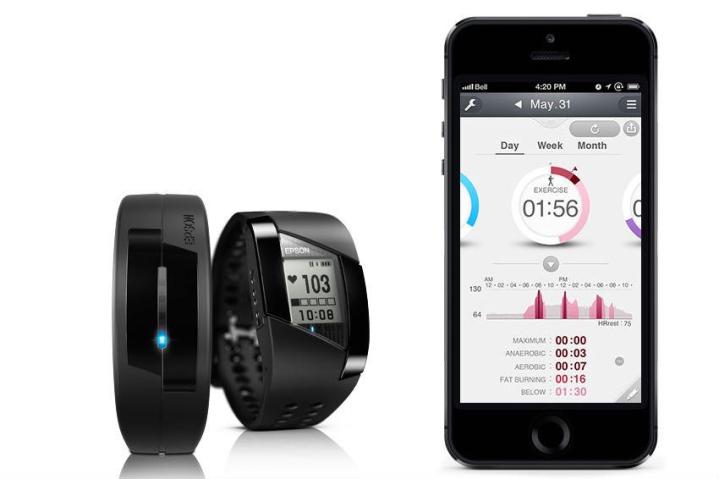
The Runsense series is geared more toward runners and features GPS tracking, while the Pulsense line is for the health conscious, with its continuous heart rate monitoring technology.
Related: Back to school wearables guide
Epson Runsense
Epson’s line of GPS fitness trackers includes the Runsense SF-310, SF-510, SF-710, and SF-810. The first three are now available, but the fourth version will arrive in November. All four look like a standard fitness wristwatch, work with the Run Connect app, and have black and white screens. The four different models come with different features, but the SF-810 is the most high-end of the bunch.

No matter the model, the screen measures 28.2 millimeters and has a 128 x 96 pixel resolution. All four Runsense watches can track your speed, pace, distance, laps, and calories burned. Every model except the entry-level SF-310 can measure your stride, too.
However, the high-end Runsense SF-810 is the only model that comes with a built-in optical heart rate sensor. This version of the Runsense is water resistant up to five atmospheres and even has an indoor mode to give you more accurate readings at the gym. The watch vibrates when you get alerts and follows your route using GPS, so you can see it in map form later. Epson says that the first three models can last up to 30 hours on a single charge, but the SF-810 will only make it through 20 hours.
Related: 6 wearables that help real people who live with serious health conditons
The high-end SF-810 model will cost you £300, or around $495 when it arrives in November. Meanwhile, the entry-level SF-310 can’t measure stride or switch over to indoor mode, but it costs half the price at £150, or about $247. The SF-510 will cost you about $313, but it includes the stride measure function. The SF-710 with its advanced training modes, will cost you £230, or about $380.
Epson Pulsense
Meanwhile, the health-focused Pulsense line comes in just two different versions: the PS-100 and the PS-500. The PS-100 looks more like a sleek fitness tracking band, while the PS-500 has a watch-like look and a screen. Both models monitor your heart rate, sleep, and the number of steps you take in a day. Users will be able to see their progress in the Pulsense View app.
Both of the Pulsense trackers vibrate when you should wake up based on your sleep schedule, as well as when you exceed your heart rate goal, and achieve other goals, like weight loss and so on. The two monitors last 36 hours on a charge, so you won’t have to recharge every day. The Pulsense devices are geared towards those who want to live a healthier lifestyle, but need a little help to get into the habit. The companion app is specifically designed to help you track your progress and help you reach your goals.
Epson Pulsense PS-100 costs £130, or around $214, while the PS-500 costs £170, or $280. The PS-100 comes in black and turquoise, but the PS-500 is only available in black.
Editors' Recommendations
- Are smartwatches and fitness trackers making us more anxious?
- Amazon’s new Halo fitness tracker offers body scanning, voice analysis, and more
- The best cheap fitness trackers of 2019
